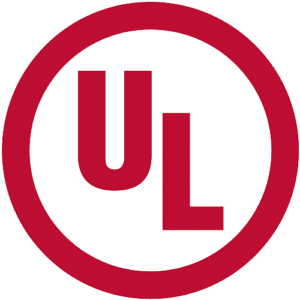Top Tips on How to Become a Fire Protection Engineer | NFSA Career Paths

The fire protection industry needs talent. Now, more than ever, there is a high demand for jobs like fire sprinkler designers and fire sprinkler fitters. Fire protection engineers are no exception to this demand.
At the time of this article’s publication, LinkedIn is showing 2,500 job posts for fire protection engineers in the United States. With such a high demand and a low recruiting pool there has never been a better time to become a fire protection engineer.
But what exactly does a fire protection engineer do? And how does one get a job in the field? The National Fire Sprinkler Association set out to answer these questions and promote the role to anyone who wanted to learn more.
A Conversation with Mike Joanis, PE
“A lot of times people don’t think there’s such a thing as fire protection engineering. We get lumped in with mechanical and electrical trades.”
-Mike Joanis, PE, NFSA Chief Engineer
Mike Joanis, PE, is the chief engineer with the National Fire Sprinkler Association. He has been in the industry for over 30 years and has served in a number of roles. Like many who came into the fire protection industry, his involvement was unplanned. Mike started out as a volunteer firefighter and would eventually make his way into fire protection engineering.
To say Mike has covered a lot in his career is an understatement. Being an engineer has allowed him to work on several complex and high-profile projects. One notable project was the Naismith Memorial Basketball Hall of Fame in Springfield, Massachusetts, though there are several others.
Mike has also contributed much to research and development, which is another path engineers can take in their careers. Mike’s research and development involved testing 50-year-old fire sprinklers to measure their effectiveness in the event of a fire.
Mike was all too happy to sit down and discuss what he learned in his time as an engineer and offer insight into how to get a start in this career as well as the variety of paths an engineer can take.
What do I Need to Study to Become a Fire Protection Engineer?
Fire protection engineers should have strong math and science skills. There is a growing list of universities that offer fire protection engineering degrees, including bachelors and all the way up to PHDs. The universities most well-known for their fire engineering degrees are the University of Maryland, Oklahoma State University, and Eastern Kentucky University—to name just a few.
Fire Protection Engineering Degrees
 |
 |
 |
|---|
The Society of Fire Protection Engineers (SFPE) compiled a list of universities that offer fire protection engineering programs. This international list of universities can be found on the society’s website, and is by no means exhaustive, as universities are establishing fire protection programs every year.
In addition to degrees, several states have licensing requirements for fire protection engineers. The SFPE provides the licensing requirements for states on its site.
What Does a Fire Protection Engineer Do?
 Fire protection engineers use their knowledge of fire science and risk management to apply an appropriate level of fire protection to a building, product, or community. This typically involves fire sprinkler systems, but can also include water mist systems, foam systems, or similar fire suppression systems.
Fire protection engineers use their knowledge of fire science and risk management to apply an appropriate level of fire protection to a building, product, or community. This typically involves fire sprinkler systems, but can also include water mist systems, foam systems, or similar fire suppression systems.
There are several paths a fire protection engineer can take, including contracting – as was Mike’s case—higher education, research and development, community risk reduction, insurance and risk assessment, and fire investigation – to name just a few.
How Does a Fire Protection Engineer Work with Fire Sprinkler Contractors?
Many projects or municipalities require a fire protection engineer to have some level of involvement in a fire protection project. This can include the design or plan review of a fire suppression system. Mike explained that as a fire protection engineer he would have to work across trades and with several stakeholders to ensure that the project kept to its vision without sacrificing fire safety.
One good example of this would be working alongside architects. Mike explained that oftentimes architects would design a room or ceiling that would push the boundaries of the fire protection standard. Since not all rooms are perfect rectangles (though some fire sprinkler designers certainly wish that were the case), it was up to Mike to find the perfect balance between aesthetics and fire protection.
Fire Protection Engineers in Higher Education
As the demand for fire protection engineers grows, so does the need for those who teach them, which is why several engineers elect to go the teaching route. There are almost as many opportunities to teach fire protection engineering as a tenured or adjunct professor as there are jobs working for contractors or insurance agencies.
Ken Isman, a former engineer at NFSA, is now employed at the University of Maryland A. James Clark School of Engineering where he teaches several classes and regularly publishes papers on fire protection engineering. Several universities require professors to conduct research in their field, so that is a central responsibility for a fire protection engineer in higher learning.
Research and Development and Fire Protection Engineering
 Every part of a fire sprinkler system, from the hangars and bracing to the fire sprinklers and up to pumps and monitoring systems, needs to be tested in order to be used in the field.
Every part of a fire sprinkler system, from the hangars and bracing to the fire sprinklers and up to pumps and monitoring systems, needs to be tested in order to be used in the field.
Two well-known agencies test these products before they are approved or listed for use in a fire suppression system: Underwriters Lab (UL) and Factory Mutual (FM).
Working in the research and development sector of fire protection engineering involves conducting quality tests and requires the ability to interpret these tests by charting and interpreting data.
The research and development sector of fire protection engineering has some of the farthest-reaching effects in the industry. Fire suppression systems are only as good as the parts that make them. With that said, ensuring that these parts are sufficiently tested before use is a huge responsibility.
Community Risk Reduction and Insurance
Risk management and providing a reasonable level of protection is another goal of fire safety, which is why several fire protection engineers choose to go into the insurance field. In this role, a fire protection engineer needs to analyze the level of risk in a certain facility –often considering what is stored in the building, how it is wrapped, how high it is stacked, and its overall value, among other fact—and create an action plan to protect it.
Fire protection engineers in this in this field work to ensure that projects are compliant with what insurance companies deem appropriate for fire safety. Engineers in this field need know the level of protection required by the standard for what is being stored as well as the insurance company’s policies regarding providing a reasonable level of protection. Beyond that, engineers need to offer reasoning behind these measures and make sure the client understands why such measures exist.
Fire Protection Engineers and Fire Investigations
More and more, courts are calling upon experts in a field to give testimony or conduct an investigation. Fires are no exception, and fire protection engineers are called upon more and more to investigate the cause of fires and offer insight into what happened.
The Harrington Group has the following to say regarding the role of fire protection engineers in investigations:
“For example, NFPA 921, Guide for Fire and Explosion Investigations, places fire protection engineers at the top of the list within the field of fire science and engineering. It describes the field of fire protection engineering as encompassing ‘all the traditional engineering disciplines in the science and technology of fire and explosions.’”
There is no getting away from the fact that accidents happen, but it is the responsibility of the fire protection engineer to investigate why it occurred and what can be done differently in a similar event. Such investigations are not only crucial for courts and insurance companies, but also help to influence the standards in the future, saving lives and property.
NFSA Members Receive All the Training Needed to Be Successful in the Fire Sprinkler Industry
For over a century, the National Fire Sprinkler Association has been one of the primary forces in advancing the fire protection industry. The NFSA does this by training the next generation of professionals to take on the challenge of protecting lives and property through the widespread acceptance of the fire sprinkler concept.
NFSA members take advantage of the association’s online and in-person training for CEUs. NFSA offers everything from introductory courses for fire protection newcomers to advanced classes on pumps and standpipes.
One of the best places to start with fire protection is the NFSA’s Layout Technician Pathway. This course gives students everything they need to know to pass their NICET Level I and NICET Level II certifications. For more information on this course, visit our Layout Technician Pathway page. You can also view the NFSA’s full course list here.
For more information on the NFSA’s mission to save lives and property, or to become a member, visit our membership page.
Further Reading:
https://www.sfpe.org/career/fpe
https://www.inspectpoint.com/what-is-a-fire-protection-engineer/
https://www.firescience.org/how-to-become-a-fire-protection-engineer/
https://fpe.umd.edu/about/why-fire-protection-engineering
https://fpe.umd.edu/undergraduate/prospective-students
https://www.wpi.edu/academics/departments/fire-protection-engineering
https://ceat.okstate.edu/det/fpset/
https://programs.eku.edu/academics/fire-protection-safety-engineering-technology
 “A lot of times people don’t think there’s such a thing as fire protection engineering. We get lumped in with mechanical and electrical trades.”
“A lot of times people don’t think there’s such a thing as fire protection engineering. We get lumped in with mechanical and electrical trades.”